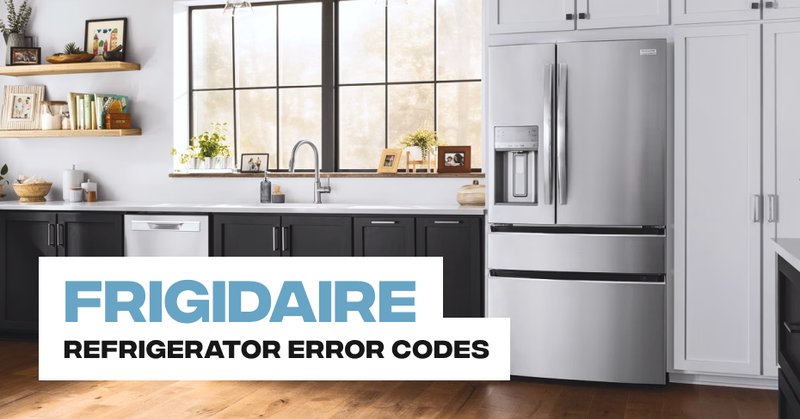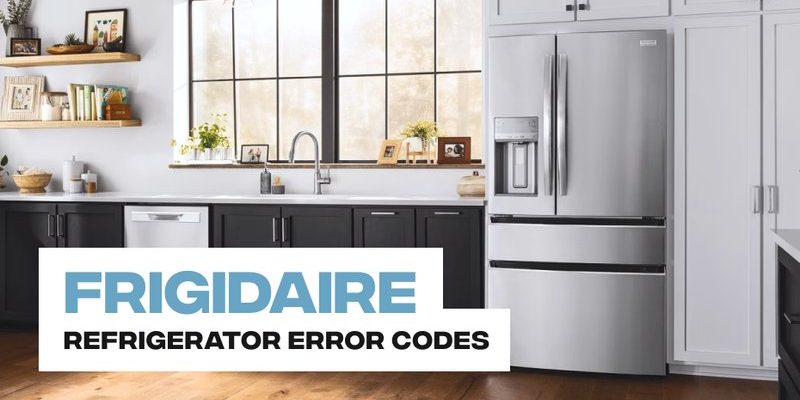
You might be wondering, “What exactly is error code E2?” Think of it like a car dashboard warning light. It’s your fridge’s way of saying, “Hey, something’s not quite right here!” Generally, this code indicates a problem with the refrigerator’s temperature sensor. Just like how a sensitive thermostat in your home lets you know if the room’s too cold or too hot, your fridge relies on this sensor to keep your food fresh and safe. If this sensor isn’t working properly, it can throw the whole system off balance. Now, let’s dive into whether hitting that reset button could make all the difference.
Understanding Error Code E2
Error code E2 mainly points to an issue with the temperature sensor inside your Frigidaire refrigerator. Imagine if your body thermometer was broken. You wouldn’t be able to tell if you had a fever or not, right? Similarly, this sensor helps your fridge decide when to cool things down and when to chill out. When it’s not working properly, the fridge can’t effectively monitor or control the internal temperature.
The E2 error can arise for several reasons. It could be due to a faulty sensor, a loose connection, or even a malfunctioning control board. Sometimes, just like when your computer starts acting up and a quick restart sets things right, your refrigerator might just need a reset to recalibrate and clear any minor glitches in its system. However, it’s important to consider all possibilities before taking any action.
So, how do you know if resetting is the right move? Here’s the deal: If the error code appeared after a power surge or outage, a reset is like giving your fridge a fresh start. However, if the sensor itself is defective, resetting might just be a temporary fix. It’s like putting a band-aid on a leaky pipe — it might hold for a bit, but the real issue remains underneath.
How to Perform a Simple Reset
Now, let’s talk about how you can try resetting your Frigidaire refrigerator. Remember, this is like rebooting your computer. It doesn’t require any advanced technical skills, just a bit of patience and caution.
First, unplug your refrigerator from the power outlet. This action is crucial as it cuts all the electricity to your fridge, allowing it to start fresh. Leave it unplugged for about five minutes. Think of it as giving your fridge a quick nap to shake off any bugs that might be causing the code to appear.
After waiting, plug the fridge back into the power outlet. Once the power is restored, you should listen for the gentle hum of your refrigerator as it powers back on. This sound means everything’s back in motion. Check if the error code has disappeared from the display. If it’s gone, congratulations! You’ve just completed a basic reset. But if it’s still there, don’t worry, more advanced troubleshooting might be needed.
Performing this reset can often clear temporary issues. However, if the problem persists, it might be time to consider other underlying causes, such as checking if the sensor itself needs replacement or if there is a connector issue.
What If Resetting Doesn’t Work?
Okay, so you’ve tried resetting, but the E2 error code is still stubbornly displayed. What now? Well, let’s explore why resetting might not have worked and what steps you can take next.
If resetting didn’t do the trick, it’s possible the temperature sensor itself has failed. In this case, think of it like a faulty lightbulb — you can flip the switch all you want, but if the bulb’s burnt out, it won’t light up. You might need to consider replacing the sensor. The sensor is generally found inside the refrigerator, and you can refer to your model’s manual for guidance on locating it.
Another possibility is that the problem lies with the control board, which acts as the brain of your refrigerator. If the brain’s not sending or receiving signals properly, then the error will persist. This might require professional repair or replacement, as working with the control board can be more complex than replacing a sensor.
In some cases, hiring a professional might be your best bet. They can conduct a thorough diagnostic to pinpoint the exact issue. While you might be tempted to fix things yourself, remember that refrigerator components can be delicate and expensive. A professional ensures the job’s done right the first time, saving you time and potentially more expensive repairs down the line.
Preventative Measures and Maintenance Tips
To avoid running into error code E2 in the future, regular maintenance is key. Just like you maintain your car to keep it running smoothly, your fridge needs some TLC from time to time.
First, keep your refrigerator clean and well-organized. Overloading it or blocking the air vents can cause the temperature to rise, leading to sensor errors. Imagine if your air conditioner vent was blocked — the room wouldn’t cool down properly, right? The same principle applies here.
Regularly check the seals around the doors, ensuring they’re tight and form a proper seal. If your fridge is working overtime because cold air is escaping, it could lead to malfunctions. Replace any damaged seals promptly to keep the cool air in and the warm air out.
Lastly, every few months, take a look at the back of your refrigerator. Dust and debris can accumulate on the coils, causing the fridge to work harder than necessary. By gently cleaning these coils, you make sure your fridge runs efficiently, reducing the chance of errors popping up.
By following these simple preventative measures, you can help extend the life of your Frigidaire refrigerator and keep those pesky error codes at bay. A little maintenance goes a long way in ensuring your kitchen’s faithful workhorse continues to keep your food fresh and your iced tea cold.
